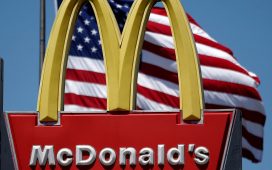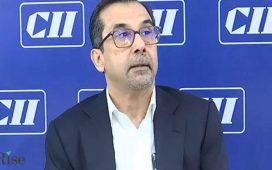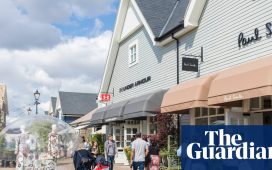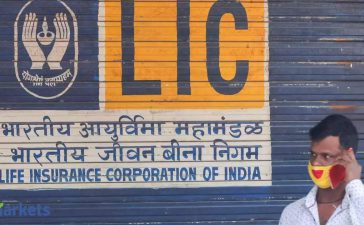Unlock the Editor’s Digest for free
Roula Khalaf, Editor of the FT, selects her favourite stories in this weekly newsletter.
UK supermarket chain J Sainsbury has forecast that its full-year profit will come in at the upper end of the range it had previously flagged after grocery sales in the first half rose by a tenth and its market share continued to climb.
Reporting results for the six months to September — the first half of the chain’s financial year — Sainsbury’s predicted that underlying pre-tax profit for the full year would come in between £670mn and £700mn. It also said that free cash flow from retail activities would be at least £600mn this year, up from previous guidance of at least £500mn.
The company, which also owns Argos, said that first-half grocery sales rose 10.1 per cent to £16.4bn compared with the same period last year, driving “record market share gains”.
“For the first time, we’re winning share from Aldi and Lidl too,” said Sainsbury’s chief executive Simon Roberts, citing data from provider Nielsen, and added that the sales rise was not simply because of inflated food prices. “We’re inflating [prices] about half the headline rate of inflation, if that gives you a sense of just how competitive we are.”
However, pre-tax profit for the first half declined 27 per cent year on year to £275mn because of “non-cash movements and one-off income from legal settlements in the prior year”.
Shares in Sainsbury’s were up 5 per cent to £2.75 in early London trading.
Some of the sales growth was driven by customers with tighter budgets increasingly opting to spend more on higher-end products, such as from the grocer’s “Taste the Difference” range, instead of eating out, said Roberts.
“Customers are choosing to treat themselves to a night in. They want a Taste the Difference meal in front of Strictly [Come Dancing].”
Sainsbury’s emphasised that to remain competitive, it had rolled out discounted prices linked to its Nectar loyalty scheme to more than 6,000 products, and that the “vast majority of customers” were now shopping with Nectar.
The loyalty scheme has also allowed the company to use data gathered from customers to sell tailored ads on its app.
The strong performance in its grocery division was partially offset by more challenging conditions for general merchandise and clothing. Seasonal ranges for the latter were hit by colder summer and warmer autumn weather, pushing second-quarter sales down 14.6 per cent and bringing the figure for the full half down 8.4 per cent.
General merchandise sales fell 2.6 per cent in the second quarter, but that figure comes to just 0.6 per cent when the impact of closing Argos in Ireland is excluded. For the full six months, sales rose 1.1 per cent.
“The summer was much tougher . . . so the fact that we grew sales in Argos, and we grew share, we’re really encouraged by actually,” said Roberts.









